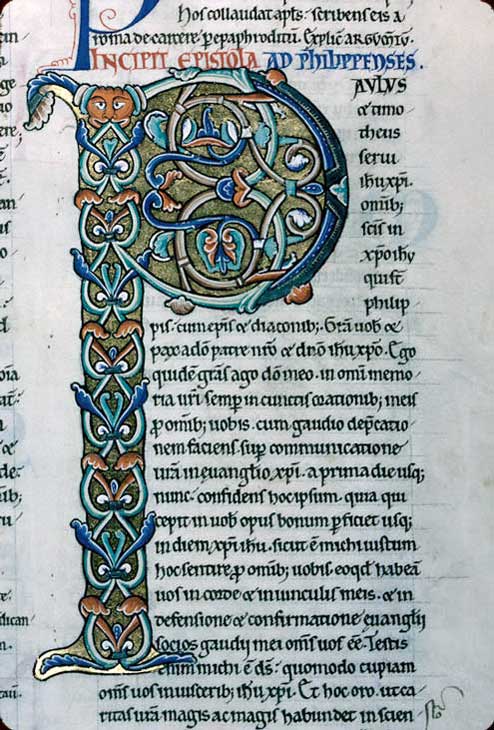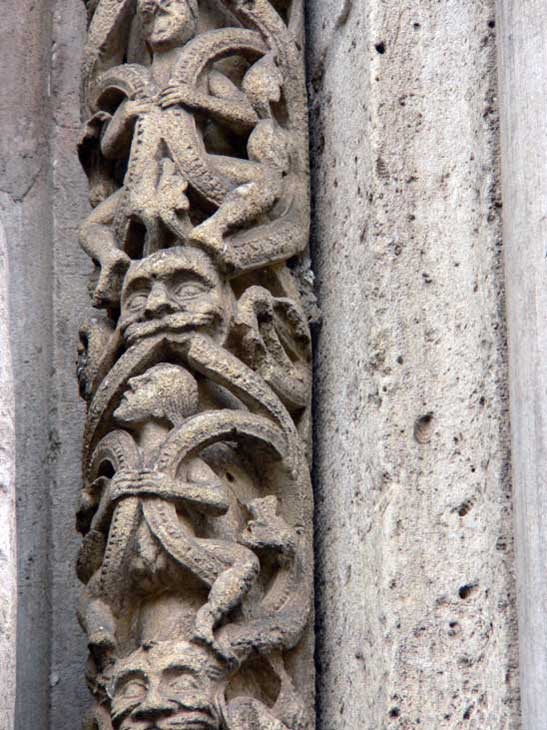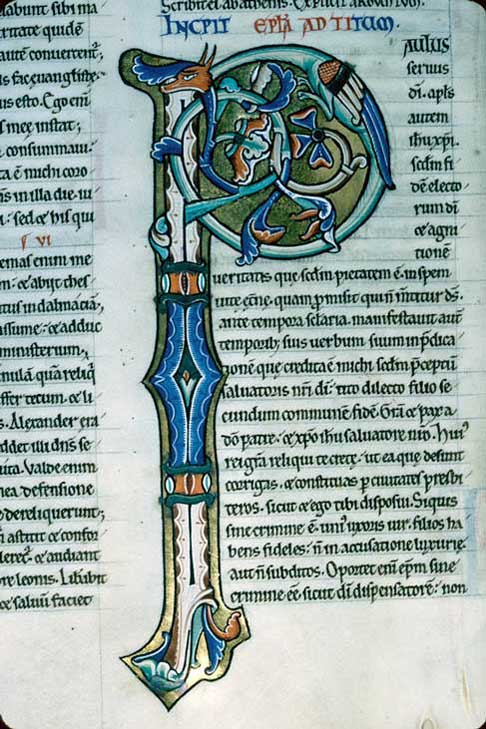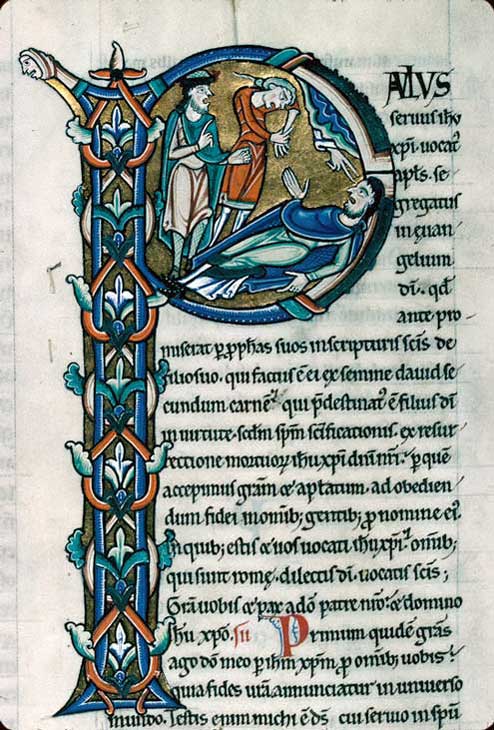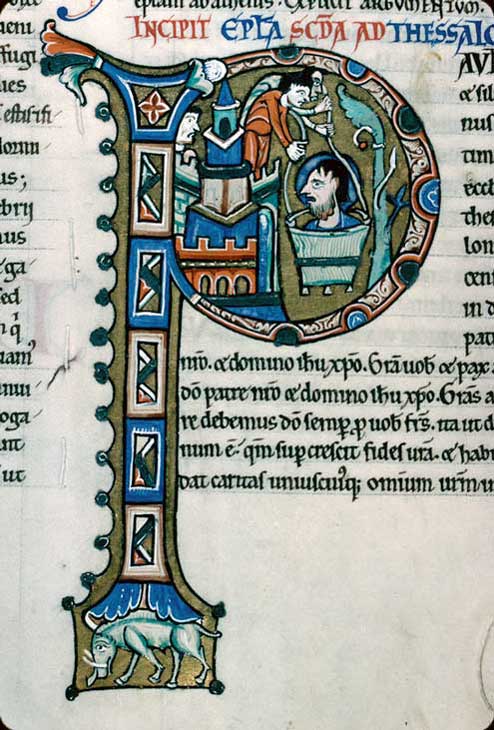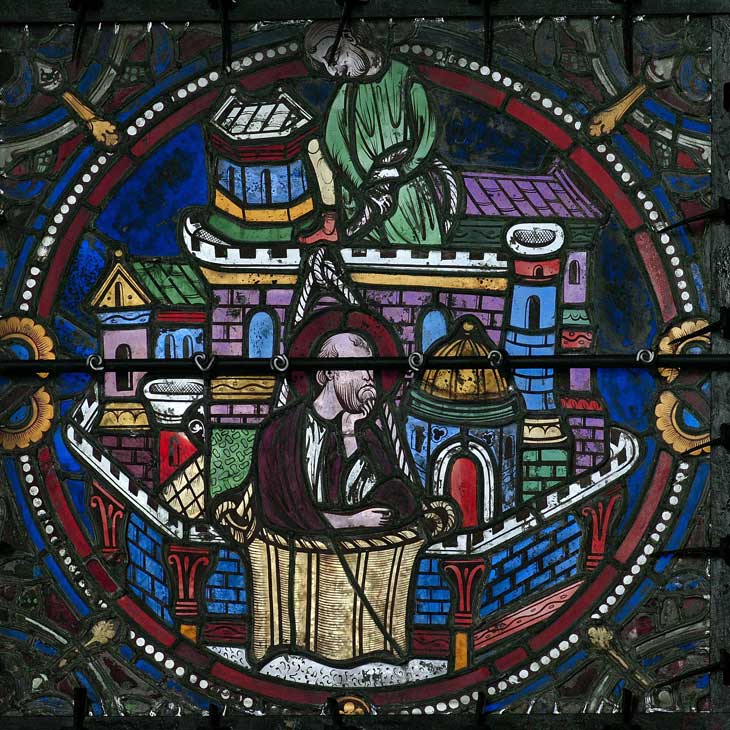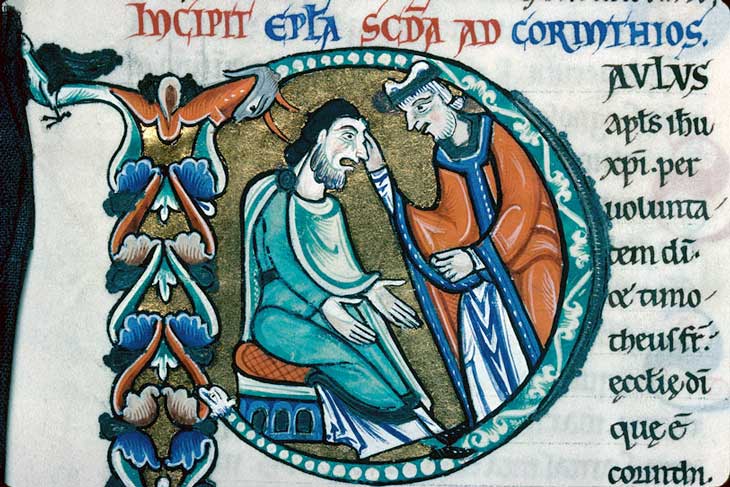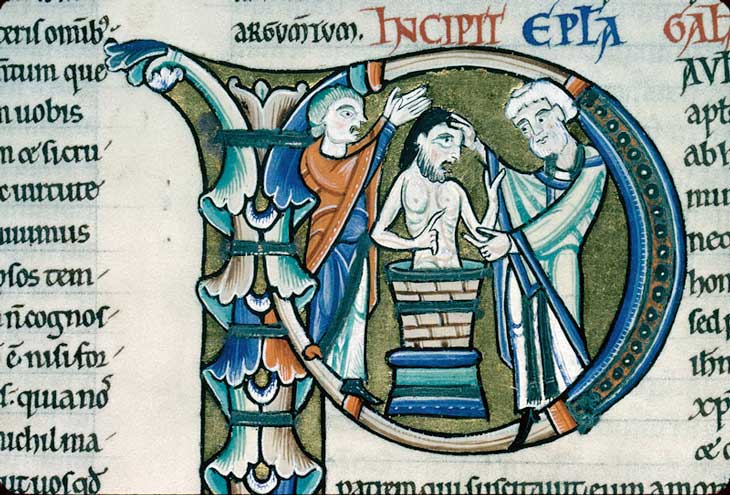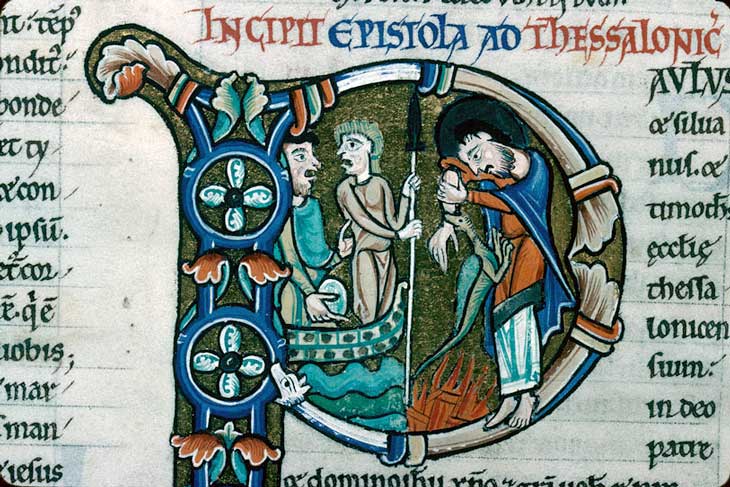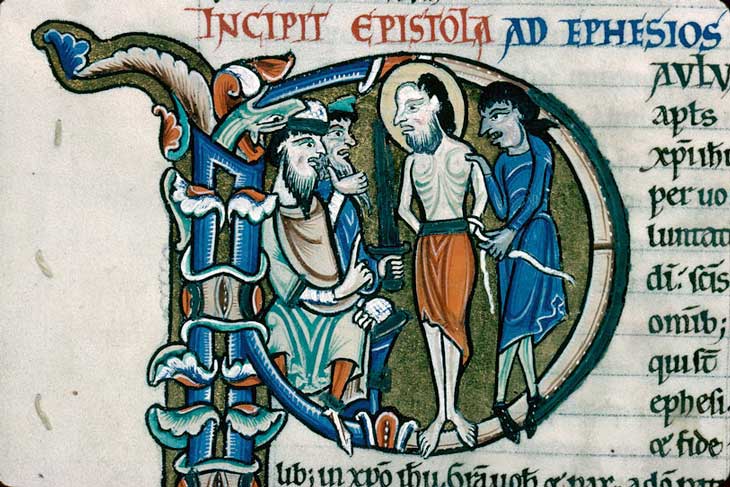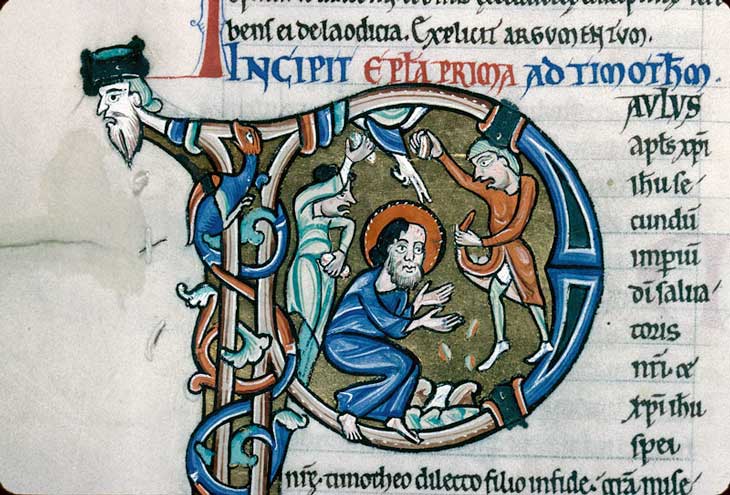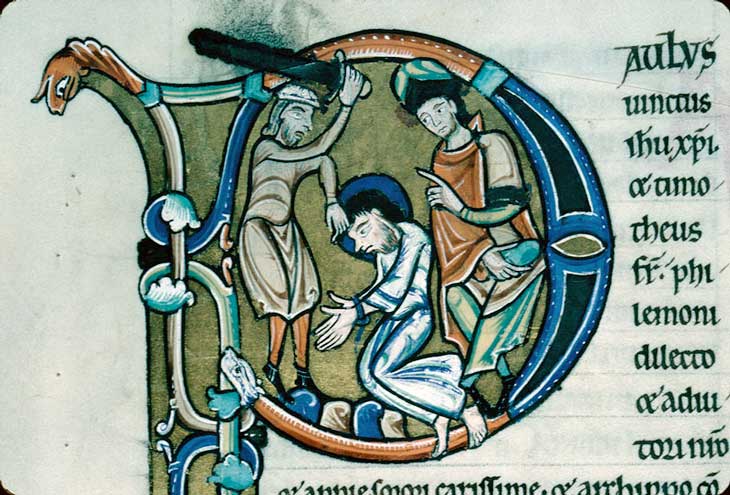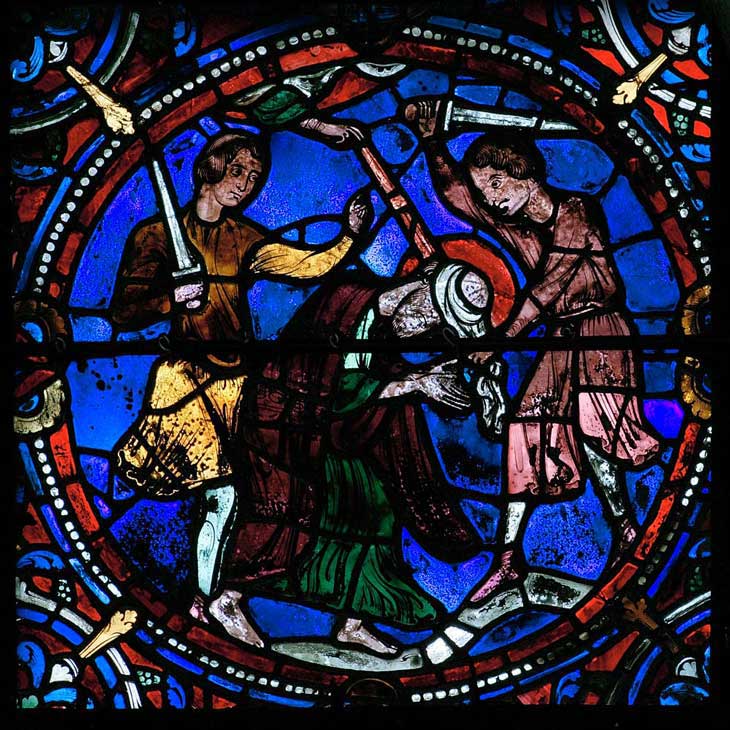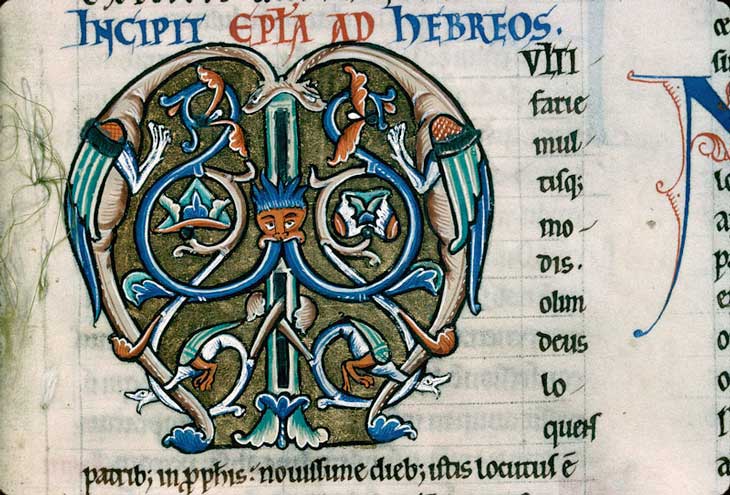While the royal portal was being built and the three large windows of the western façade were being created, the cathedral – or the abbey of St Père en Vallée, in the lower town – also produced several manuscripts whose decoration is on a par with sculpture and glass art: an artistic summit.
Two manuscripts have already been discussed (see 1/5 and 2/5). Manuscript 2391 from the Troyes library, known as the “Bible des comtes de Champagne”, bears a strong resemblance to Bible 458, preserved in the same institution and of which it is perhaps the continuation, even if the different volumes subsequently followed a different itinerary. Manuscript 2391 includes the Old Testament books from Chronicles to Maccabees, as well as the entire New Testament. The patron is thought to be Thibaut II of Champagne, who was also Count of Meaux, Blois, Châteaudun… and Chartres.
The Chartres origin has been confirmed by Patricia Stirnemann, a researcher at the Institut de Recherche et d’Histoire des Textes, who has made the connection with several previously catalogued works. It can be dated to between 1140 and 1160.
The ornate letters use a variety of motifs, the most common of which are the scroll and the dragon. The leaves are frequently inspired by acanthus. Some letters at the head of a biblical book also depict scenes from the story.
Selection of the most beautiful letters:
